Maa Tara Tarini Temple: A Guide To What To Know Before You Go and complete information about Maa Tara Tarini Mandir Timings including Darshan and Puja.
About Maa Taratarini Temple
The Maa Taratarini Temple is a famous Hindu shrine dedicated to the twin goddesses Tara and Tarini, revered as manifestations of Adi Shakti (the supreme goddess). Located atop the Kumari Hills near the Rushikulya River in Ganjam district, Odisha, it is one of the most significant Shakti Peethas in India.
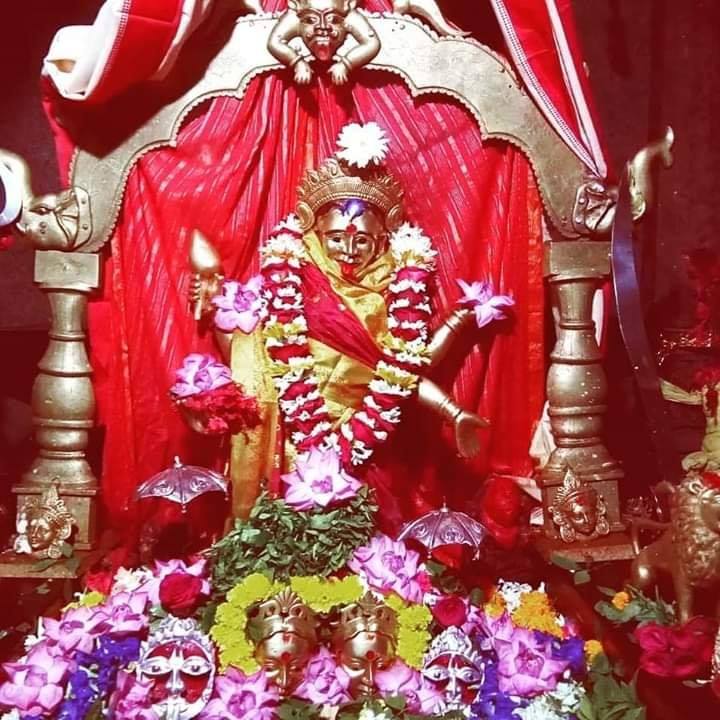
Key Features of the Temple:
-
Deities:
-
The temple houses two stone idols of Maa Tara Tarini, adorned with gold and silver ornaments.
-
They are worshipped as the breast shrine (Stana Peetha) of Goddess Sati, according to Hindu mythology.
-
-
Mythological Significance:
-
It is believed to be one of the 51 Shakti Peethas, where the breasts of Goddess Sati fell.
-
The goddesses are considered the presiding deities (Ista Devi) of the Ganjam region.
-
-
Architecture:
-
The temple has a Kalinga-style architecture with a stone-built structure and a brightly painted exterior.
-
The twin goddesses are seated on a pedestal, with wooden idols used for ceremonial processions.
-
-
Pilgrimage & Festivals:
-
Chaitra Parba (March-April): A major festival when thousands of devotees visit.
-
Tuesdays & Sundays: Considered especially auspicious for worship.
-
Navratri: Celebrated with grand rituals and fairs.
-
-
Unique Rituals:
-
Devotees tie sacred threads (Maanati) on the nearby wish-fulfilling tree for blessings.
-
Animal sacrifice (Balikarma) was traditionally practiced but has been replaced with symbolic offerings.
-
-
Accessibility:
-
Located 30 km from Brahmapur (Berhampur) and 160 km from Bhubaneswar.
-
Visitors can reach the temple via stairs (999 steps) or a ropeway (aerial tramway).
-
Legend & History
-
The temple has ancient roots, possibly linked to Buddhist Tara worship before being assimilated into Hinduism.
-
Historical records suggest it was a major Shakti center during the Sailodbhava dynasty (6th–8th century CE).
-
The current structure was renovated in the 17th–19th centuries under local rulers.
Tourist Attractions Nearby
-
Rushikulya River (famous for Olive Ridley turtle nesting)
-
Taptapani Hot Springs
-
Chilika Lake (Asia’s largest brackish water lagoon)
The Maa Taratarini Temple is not just a religious site but also a scenic spot offering panoramic views of the surrounding hills and rivers. It attracts devotees, tourists, and spiritual seekers year-round.
About Maa Tara tarini Temple Tourism
The Maa Taratarini Temple, one of Odisha’s most revered Shakti Peethas, attracts millions of pilgrims and tourists every year. Nestled atop the Kumari Hills, it offers a mix of spiritual significance, natural beauty, and adventure tourism.
Tourism Highlights at Maa Taratarini Temple
1. Spiritual & Religious Tourism
-
Pilgrimage Destination: One of the 51 Shakti Peethas, where the breasts of Goddess Sati fell.
-
Auspicious Days:
-
Tuesdays & Sundays – Special worship days.
-
Chaitra Mela (March-April) – Massive festival with lakhs of devotees.
-
Navratri & Durga Puja – Grand celebrations with rituals and cultural programs.
-
-
Unique Rituals:
-
Maanati Bandha (Sacred Thread tying) – Devotees tie threads on a wish-fulfilling tree.
-
Mundan (Hair Offering) – Many offer their hair as a vow to the goddess.
-
2. Scenic Beauty & Nature Tourism
-
Panoramic Hilltop Views: The temple offers breathtaking views of the Rushikulya River and surrounding forests.
-
Sunrise & Sunset: A perfect spot for nature lovers and photographers.
-
Lush Greenery: The hills are covered with dense forests, making it a serene escape.
3. Adventure & Accessibility
-
Climbing the 999 Steps: A popular trek for devotees and adventure seekers.
-
Ropeway (Aerial Tramway):
-
India’s first hilltop temple ropeway (opened in 2009).
-
Cost: ~₹100 per person (round trip).
-
Time: 5-minute ride with stunning aerial views.
-
-
Road Connectivity: Well-connected via NH16 (Chennai-Kolkata Highway).
4. Nearby Tourist Attractions
| Place | Distance | Highlights |
|---|---|---|
| Taptapani Hot Springs | 50 km | Sulphur-rich medicinal springs |
| Chilika Lake | 70 km | Asia’s largest brackish water lagoon, Irrawaddy dolphins |
| Gopalpur Beach | 55 km | Serene beach, water sports |
| Brahmapur (Berhampur) | 30 km | Silk markets, shopping, urban amenities |
5. Facilities for Tourists
-
Accommodation:
-
Budget: Dharamshala near the temple.
-
Mid-Range: Hotels in Brahmapur (Berhampur).
-
Luxury: Resorts near Chilika & Gopalpur.
-
-
Food:
-
Prasad (Mahaprasad) at temple premises.
-
Local Odia cuisine available in nearby stalls.
-
-
Parking & Transport:
-
Ample parking at the base.
-
Auto-rickshaws & taxis available from Brahmapur.
-
Best Time to Visit
-
October to March (Pleasant weather, ideal for travel).
-
Avoid peak summer (April-June) due to heat.
-
Monsoon (July-September) – Lush greenery but slippery steps.
How to Reach?
-
By Air: Nearest airport is Bhubaneswar (160 km).
-
By Train: Nearest railway station is Brahmapur (Berhampur, 30 km).
-
By Road: Well-connected via NH16; buses & taxis available from Bhubaneswar, Puri, and Vizag.
Why Visit Maa Taratarini Temple?
✔ Powerful Shakti Peetha – Fulfills wishes & spiritual blessings.
✔ Adventure + Scenic Beauty – Trekking, ropeway, and stunning views.
✔ Cultural Experience – Festivals, rituals, and Odia traditions.
✔ Nearby Attractions – Chilika, Gopalpur, and Taptapani.
A Must-Visit for Pilgrims & Nature Lovers
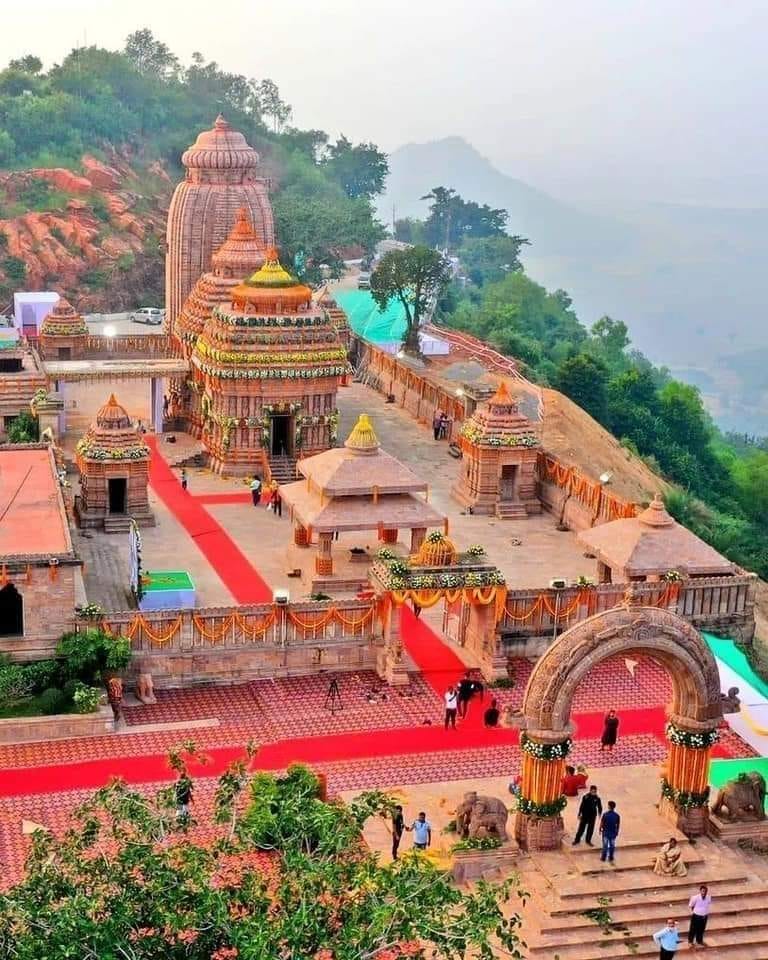
Maa Tara tarini Temple Tourism History
Tourism History of Maa Taratarini Temple
The Maa Taratarini Temple, located near Brahmapur (Berhampur), Odisha, has a rich history intertwined with religion, culture, and tourism development. Over the centuries, it evolved from a local tribal shrine to one of India’s most visited Shakti Peethas.
Ancient & Medieval Period (Pre-1600 CE)
1. Tribal & Buddhist Origins
-
The temple site was originally a tribal worship center for the Goddess Tara, revered by local communities.
-
Some historians suggest Buddhist influence, as Tara is also a key deity in Vajrayana Buddhism.
-
The Sailodbhava dynasty (6th–8th century CE) possibly patronized the site as a Shakti Peetha.
2. Integration into Hinduism
-
By the medieval period, the temple was fully assimilated into Hindu Shakta tradition.
-
The Ganga dynasty (11th–15th century CE) and later Gajapati rulers supported the temple’s growth.
Colonial Era (1600–1947)
1. British Documentation
-
The East India Company recorded the temple in 19th-century surveys as a major pilgrimage site.
-
Devadasi tradition (temple dancers) was prevalent until the British banned it in the early 1900s.
2. Infrastructure Development
-
Road connectivity improved under British rule, linking Brahmapur (Berhampur) to the temple.
-
Railway expansion in Odisha (late 1800s) made the temple more accessible.
Post-Independence (1947–2000)
1. Government Recognition
-
The Odisha State Government officially recognized the temple as a key pilgrimage site in the 1960s.
-
Archaeological Survey of India (ASI) studied its historical significance.
2. Rise in Pilgrimage Tourism
-
Improved bus services from Bhubaneswar, Cuttack, and Puri boosted visitor numbers.
-
Media & word-of-mouth spread its fame beyond Odisha.
Modern Tourism Boom (2000–Present)
1. Ropeway Inauguration (2009)
-
India’s first hilltop temple ropeway was introduced, attracting non-pilgrim tourists.
-
Reduced the need to climb 999 steps, making it accessible for elderly & disabled visitors.
2. Government & Private Investments
-
Better roads, parking, and guesthouses were developed.
-
Digital promotion through social media & tourism websites increased visibility.
3. Festivals & Events Driving Tourism
-
Chaitra Mela (March–April) – Draws over 1 million devotees.
-
Navratri & Durga Puja – Grand celebrations with cultural programs.
4. Recognition as a Tourist Circuit
-
Included in Odisha’s Shakti Peetha Tourism Circuit.
-
Linked with Chilika Lake, Gopalpur Beach, and Taptapani for holistic travel experiences.
Future Tourism Prospects
-
Proposed cable car expansion for better crowd management.
-
Eco-tourism initiatives around Kumari Hills.
-
Digital darshan & virtual tours for global devotees.
Why is Maa Taratarini a Tourism Success?
Mix of devotion & adventure (trekking, ropeway).
Government & private sector support.
Strategic location (near beaches, lakes, and cities).
Rich cultural heritage attracting historians & pilgrims alike.
History of Maa tara tarini
History of Maa Tara Tarini Temple: From Ancient Times to Modern Era
The Maa Tara Tarini Temple, one of the oldest Shakti Peethas in India, has a deep-rooted history blending mythology, tribal worship, Buddhism, and Hinduism. Located near Brahmapur (Berhampur), Odisha, its origins trace back thousands of years.
1. Mythological Origins (Satya Yuga – Treta Yuga)
The Shakti Peetha Legend
-
According to Puranas, when Lord Vishnu cut Goddess Sati’s body to stop Lord Shiva’s grief, her breasts (Stana) fell here, making it a Shakti Peetha.
-
The twin goddesses Tara and Tarini represent Adi Shakti (Supreme Feminine Power).
Connection with Ramayana & Mahabharata
-
Some believe Lord Rama worshipped here during his exile.
-
The Pandavas are said to have sought blessings before the Kurukshetra war.
2. Prehistoric & Tribal Worship (Before 6th Century CE)
-
The site was originally a tribal shrine dedicated to Tara, worshipped by local Sabara tribes.
-
Tantric practices and nature worship were prevalent.
3. Buddhist Influence (6th–8th Century CE)
-
The Buddhist goddess Tara (a form of Devi) was worshipped here during the Sailodbhava dynasty.
-
Some historians link it to Vajrayana Buddhism, which revered Tara as a compassionate deity.
4. Hindu Revival & Temple Construction (8th–16th Century CE)
Under the Ganga Dynasty (11th–14th Century)
-
The Ganga kings (devotees of Shakti) built the first structured stone temple.
-
The site was formally recognized as a Shakti Peetha.
Gajapati Era (15th–16th Century)
-
The Gajapati rulers of Odisha expanded the temple and promoted Shakta traditions.
-
Animal sacrifice (Bali Pratha) became a ritual, later replaced by symbolic offerings.
5. Colonial Period (17th–20th Century)
-
Maratha rulers (18th century) patronized the temple.
-
British records (19th century) mention it as a major pilgrimage site.
-
Devadasi system (temple dancers) existed until the British banned it.
6. Modern Restoration & Tourism Growth (Post-1947)
-
1960s: Odisha government took steps to preserve the temple.
-
2009: India’s first hilltop temple ropeway was introduced, boosting tourism.
-
2010s: Declared part of Odisha’s Shakti Peetha Circuit, attracting millions.
7. Archaeological & Literary Evidence
-
Copperplate inscriptions mention grants to the temple.
-
Medieval Odia texts like Tara Tarini Mahatmya describe its glory.
Why is this History Significant?
✔ One of the oldest continuously worshipped Shakti shrines.
✔ Blend of tribal, Buddhist, and Hindu traditions.
✔ Witnessed dynasties from Gangas to British.
Maa Tara Tarini Temple Tours
Maa Tara Tarini Temple Tours – Pilgrimage & Sightseeing Packages
The Maa Tara Tarini Temple is a major spiritual and tourist destination in Odisha, attracting millions of devotees and travelers every year. Whether you seek a religious pilgrimage, a scenic hilltop experience, or a cultural tour, there are various travel options available.
1. Popular Tour Packages
A. Pilgrimage Special (1-2 Days)
✔ Highlights:
-
Darshan of Maa Tara Tarini
-
Participation in morning/evening Aarti
-
Visit to the sacred wish-fulfilling tree (Maanati Bandha)
-
Optional hair offering (Mundan)
✔ Itinerary:
-
Day 1: Arrival at Brahmapur → Temple visit via ropeway → Evening Aarti → Stay at Dharamshala/local hotel
-
Day 2: Sunrise darshan → Visit Taptapani Hot Springs (optional) → Return
✔ Best For: Devotees, families, solo travelers
B. Shakti Peetha & Coastal Tour (3-4 Days)
✔ Highlights:
-
Tara Tarini Temple + Other Shakti Peethas (Biraja Temple, Chandi Temple)
-
Chilika Lake (Dolphin spotting)
-
Gopalpur Beach sunset
✔ Itinerary:
-
Day 1: Bhubaneswar → Tara Tarini Temple → Stay in Brahmapur
-
Day 2: Chilika Lake (Satapada) → Gopalpur Beach
-
Day 3: Taptapani Hot Springs → Return
✔ Best For: Spiritual seekers + nature lovers
C. Odisha Heritage & Temple Tour (5-7 Days)
✔ Highlights:
-
Tara Tarini Temple
-
Jagannath Temple (Puri)
-
Konark Sun Temple
-
Dhauli Shanti Stupa
✔ Itinerary:
-
Day 1: Bhubaneswar (Lingaraj Temple, Udayagiri Caves)
-
Day 2: Puri (Jagannath Temple, Beach)
-
Day 3: Konark Sun Temple → Brahmapur
-
Day 4: Tara Tarini → Return
✔ Best For: Culture & history enthusiasts
2. How to Book a Tour?
A. Government & Private Tour Operators
-
OTDC (Odisha Tourism) – Offers budget packages.
-
Private Agencies – More customizable options (e.g., SOTC, MakeMyTrip).
B. Self-Drive Tour (Recommended for Flexibility)
-
Route: Bhubaneswar → Puri → Konark → Brahmapur → Tara Tarini
-
Rent a car or use Odisha’s taxi services.
3. Best Time for Tours
-
October to March (Pleasant weather, best for travel)
-
Avoid peak summer (April-June) due to extreme heat.
-
Festive seasons (Chaitra Mela, Navratri) for a vibrant experience.
4. Travel Tips
✔ Dress Code: Traditional/Modest clothing preferred.
✔ Ropeway Ticket: Book in advance during festivals.
✔ Stay Options: Dharamshala (temple), hotels in Brahmapur (3-star available).
✔ Local Food: Try Odia Mahaprasad & seafood at Gopalpur.
Why Choose a Tara Tarini Tour?
Divine blessings at a powerful Shakti Peetha.
Scenic beauty – Hilltop views, lush greenery.
Cultural immersion – Odia traditions, festivals.
Adventure – Ropeway, trekking, nearby beaches.
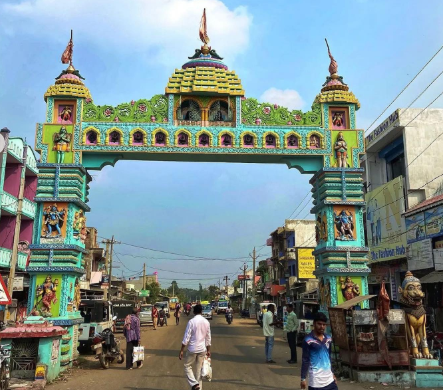
Maa Tara tarini Temple Information
Here’s a comprehensive guide to Maa Tara Tarini Temple, covering all essential information for pilgrims and tourists:
1. Basic Information
-
Location: Kumari Hills, Near Rushikulya River, Ganjam District, Odisha (30km from Brahmapur/Berhampur)
-
Deity: Twin Goddesses Tara and Tarini (Shakti manifestations)
-
Significance: One of 51 Shakti Peethas (where Sati’s breasts fell)
-
Altitude: 708 feet above sea level
2. Temple Architecture
-
Style: Kalinga temple architecture
-
Structure:
-
Sanctum with twin stone deities adorned in gold/silver
-
Brightly painted exterior with traditional motifs
-
Separate Yagna Mandap for rituals
-
3. Darshan & Rituals
-
Opening Hours: 5:00 AM to 9:00 PM (extended during festivals)
-
Special Rituals:
-
Maanati Bandha: Tying sacred threads on wish-fulfilling tree
-
Mundan: Hair offering tradition
-
Nabanna: First rice offering (November-December)
-
-
Aarti Timings:
-
Morning: 6:00 AM
-
Evening: 6:30 PM (most spectacular)
-
4. Festivals
| Festival | Month | Significance |
|---|---|---|
| Chaitra Mela | Mar-Apr | Largest festival (lakhs of devotees) |
| Navratri | Sep-Oct | 9-day grand celebration |
| Pana Sankranti | April | Odia New Year special puja |
| Dussehra | Oct | Victory celebrations |
5. How to Reach
-
By Air: Nearest airport – Biju Patnaik Airport, Bhubaneswar (160km)
-
By Rail: Nearest station – Brahmapur (30km)
-
By Road:
-
From Bhubaneswar: 4hrs via NH16
-
From Vizag: 5hrs via NH16
-
Last Mile Access:
-
999 steps climb (45-60 mins)
-
Ropeway (5 mins, ₹100 round trip)
-
Paid jeep service available
6. Nearby Attractions
-
Within 10km:
-
Rushikulya River (famous for Olive Ridley nesting)
-
Chandragiri (scenic viewpoints)
-
-
Within 50km:
-
Taptapani Hot Springs (50km)
-
Gopalpur Beach (55km)
-
Chilika Lake (70km)
-
7. Visitor Facilities
-
Accommodation:
-
Temple Dharamshala (₹200-500)
-
3-star hotels in Brahmapur (₹1500-3000)
-
-
Food:
-
Temple Prasad Bhandar
-
Local Odia cuisine stalls
-
-
Other Facilities:
-
Free drinking water
-
Clean washrooms
-
Shoe storage (₹10)
-
Medical aid center
-
8. Unique Features
-
Only Shakti Peetha with twin goddesses
-
Blend of tribal, Buddhist and Hindu traditions
-
Ancient cave behind temple (restricted access)
-
Natural spring at hilltop
9. Visitor Tips
-
Best time to visit: October-March
-
Avoid Tuesdays/Sundays if preferring less crowd
-
Carry water for climb (available at steps too)
-
Photography allowed (except in sanctum)
-
Mobile network available (BSNL strongest)
10. Contact Information
-
Official Website: taratarini.nic.in
Interesting things to visits near Maa Tara tarini Temple
Here are the most interesting places to visit near Maa Tara Tarini Temple, combining spiritual, natural, and cultural experiences:
1. Taptapani Hot Springs (50km)
-
Why Visit? Therapeutic sulfur-rich natural springs
-
Unique Feature: Only hot spring in Odisha with 55°C water
-
Bonus: Nearby Gandahati Waterfall (seasonal)
2. Gopalpur-on-Sea (55km)
-
Attractions:
-
Historic light house (1860s British-era)
-
Dead Sea-like floating experience in saltwater
-
Sunset cruises available
-
-
Specialty: Fresh seafood shacks by the beach
3. Chilika Lake (70km)
-
Must-Do:
-
Dolphin spotting at Satapada
-
Birdwatching at Nalabana Sanctuary (migratory birds Nov-Feb)
-
Kalijai Temple (island shrine)
-
-
Unique Experience: Breakfast cruise to Pearl Island
4. Buddhist Sites Circuit
-
Jaugada (60km): Ancient Ashokan edicts
-
Langudi Hill (85km): 1st-century BC Buddhist ruins
-
Dhauli Stupa (150km): Peace pagoda with light show
5. Tribal Villages of Ganjam
-
Bodo Tribe Villages (40km):
-
Witness traditional Sabai grass craft
-
Tribal dance performances (book through OTDC)
-
-
Weekly Haats: Chatrapur tribal market (Wednesdays)
6. Rushikulya River Mouth (25km)
-
Seasonal Wonder (Feb-Apr):
-
Olive Ridley mass nesting (Arribada)
-
Night turtle walks (with forest dept permission)
-
-
Year-round: Estuary boat rides
7. Historic Brahmapur (30km)
-
Must See:
-
Brahmapur Silk Market (famous for Tussar silk)
-
Jagannath Temple (mini Puri-style architecture)
-
British-era Cemetery (colonial history)
-
8. Adventure Options
-
Tampara Lake (45km):
-
Kayaking and paddleboarding
-
Night camping (permitted areas)
-
-
Mahendragiri Hills (120km):
-
Odisha’s second highest peak
-
Paragliding opportunities
-
9. Unique Spiritual Sites
-
Maa Budhi Thakurani (Brahmapur):
-
Famous for 2-yearly Thakurani Yatra festival
-
-
Panchama Temple (40km):
-
Only temple in India dedicated to the 5th Veda
-
10. Offbeat Experiences
-
Potagarh Fort (65km):
-
Ruins of 1768 Dutch fort
-
Secret tunnels to Rushikulya river
-
-
Buguda Silk Weaving Cluster (80km):
-
See traditional Pattachitra silk weaving
-
Tip: Combine visits based on direction:
-
Beach Route: Tara Tarini → Gopalpur → Chilika
-
Heritage Route: Tara Tarini → Jaugada → Potagarh
-
Nature Route: Tara Tarini → Rushikulya → Mahendragiri
Most locations are accessible via hired taxis from Brahmapur. Best visited between October-March for pleasant weather and turtle nesting season.
What To Expect Inside Maa Tara tarini Temple
Here’s what you’ll experience inside the sacred precincts of Maa Tara Tarini Temple:
1. The Sanctum Sanctorum (Garbhagriha)
-
Twin Deities: You’ll see two ancient stone idols of Maa Tara (left) and Maa Tarini (right) seated on a pedestal, adorned with:
-
Gold crowns and silver ornaments
-
Fresh flower garlands (changed thrice daily)
-
Traditional red-and-white Odisha-style cloth draping
-
-
Unique Feature: The idols are positioned so they appear to gaze at devotees from any angle
2. Ritual Areas
-
Homa Kund: Sacred fire pit for special pujas
-
Bali Peetha: Former animal sacrifice platform (now used for symbolic offerings)
-
Nabagraha Platform: Nine planetary deities shrine for astrological remedies
3. The Divine Atmosphere
-
Constant Chanting: Priests recite the Tara Tarini Kavacha (protective hymn)
-
Aarti Experience:
-
Morning (6 AM): Conch blowing and incense
-
Evening (6:30 PM): Oil lamps with 108 wicks
-
-
Special Sounds: Temple bells mixed with Rushikulya river breeze
4. Sacred Trees & Symbols
-
Kalpa Vriksha: The wish-fulfilling banyan tree where devotees tie:
-
Red-yellow threads (for wishes)
-
Small cradle replicas (for childbirth blessings)
-
-
Trishul Marks: Ancient trident carvings on walls
5. Hidden Spiritual Spots
-
Gupta Ganga: Secret natural spring behind sanctum (priests-only access)
-
Ancient Cave: Below main temple (occasionally opened for special pujas)
6. Prasad Distribution
-
Typical Offerings:
-
Khichdi Prasad (rice-lentil mix)
-
Patri (sacred leaves)
-
Sukhua (dry fish – local tradition)
-
-
Special Days: Coconut laddus on Tuesdays
7. Temple Architecture Details
-
Carved Warriors: Guardian figures flanking the entrance
-
Sun Symbol: Ancient carving above doorway
-
Yantras: Mystical geometric designs on ceiling
8. Pilgrim Practices You’ll Witness
-
Mundan Ritual: Devotees shaving heads as offering
-
Anga Sparsha: Touching the deity’s feet through priest
-
Pradakshina: Circumambulation (3 or 7 rounds)
9. Restricted Areas
-
Inner Sanctum: Only priests allowed beyond silver railing
-
Priest’s Chamber: Where the deities’ ornaments are stored
10. Unique Experiences
-
Morning Abhishek: Watch priests bathe the idols in milk/honey (5:30 AM)
-
Evening Sandhya Alati: Oil lamps reflected in deity’s silver ornaments
-
Full Moon Nights: Special illumination of the hilltop temple
Tips for Visitors:
-
The idols appear different at various times – morning (motherly), noon (fierce), evening (serene)
-
Touch the ancient stone walls – many believe they radiate energy
-
Sit quietly near the kalpa vriksha – locals claim you can hear whispers of devotees’ wishes
Type of Destination – Pilgrimage
Languages Spoken – Oriya and Hindi
Maa Tara tarini Temple Image Galley
Maa Tara tarini Temple Tourist Map
Here’s a detailed tourist map guide to Maa Tara Tarini Temple and its surroundings, designed to help you navigate the sacred site and nearby attractions:
MAIN TEMPLE COMPLEX LAYOUT
(Hilltop Area – 708ft Elevation)
-
Entrance Archway
-
Giant red-colored torana with Odia script
-
Security check & shoe deposit (₹10 per pair)
-
-
Staircase Approach
-
999 steps flanked by:
-
Shaded rest points every 100 steps
-
Drinking water stations
-
Small shrines to Ganesha & Hanuman
-
-
-
Ropeway Terminal
-
North-side arrival point
-
Ticket counter (₹100 round trip)
-
Panoramic viewing deck
-
-
Main Temple Structure
-
Garbhagriha (Sanctum): Twin deities behind silver railing
-
Natya Mandap: Ritual dance area (used during festivals)
-
Bhoga Mandap: Offering hall
-
-
Sacred Grove Area
-
Kalpa Vriksha (Wish Tree) with thread-tying zone
-
Ancient trident carvings on rock face
-
Natural spring (Gupta Ganga)
-
-
Facilities Circle
-
Prasad counter (try the special coconut laddus)
-
Pilgrim rest sheds
-
First-aid center
-
KEY LANDMARKS SHOWN ON MAP
-
Blue Lines: Water bodies (Rushikulya River)
-
Green Zones: Forested areas
-
Red Stars: Major temples/shrines
-
Yellow Dots: Food/rest areas
TRANSPORT HUBS MARKED
-
Base Camp Parking (Cars/Buses)
-
Brahmapur Railway Station (30km)
-
Nearest Bus Stand (Kanishi – 5km)
DIGITAL MAP ACCESS
-
Google Maps Pin: Search “Tara Tarini Ropeway Point”
-
Interactive Temple Map: Available at taratarini.nic.in/map (shows real-time crowd density)
Opening & Closing Hours-Aarti/ Darshan Time Timings and Details
Darshan Timings –
Morning Timing :- 06:30AM to 12:30PM
Afternon timing :- 02:00PM to 05:00PM
Evening Timing :- 06:30PM to 08:30PM
Dress Code- Traditional and Formal clothes
Photography- Allowed
Prasad- Available
Address:
Maa Tara tarini Udan khatola At: Taratarini, Block: Purusottompur Dist. Gunjam – 761 018
Near by Cities:
Nearest Railway Station:
Nearest Bus Station:
Nearest Airport:
Best Time to visit : January to December
Opens Till : 6AM – 7PM
Entry fee : Free
Vehicle : Free
Maa Tara tarini Temple Ropeway Timings:
Here are the detailed ropeway timings and essential information for Maa Tara Tarini Temple:
Ropeway Operating Hours
Daily Schedule:
-
Morning: 8:00 AM to 12:30 PM
-
Afternoon: 2:00 PM to 6:00 PM
(Closed for lunch break: 12:30 PM – 2:00 PM)
Frequency:
-
Every 15 minutes (or when cabins fill up during peak times)
-
Duration: 5 minutes one-way
Special Timings
Festival Days (Chaitra Mela, Navratri, etc.):
-
Starts at 6:30 AM (extended hours)
-
Runs until 8:00 PM (subject to crowd)
Full Moon Nights:
-
Night rides available till 9:00 PM (advance booking recommended)
Ticket Information
Fares:
-
Adult: ₹100 (round trip) | ₹60 (one-way)
-
Child (3-12 years): ₹50 (round trip) | ₹30 (one-way)
-
Priority Darshan Ticket: ₹200 (skip-the-line access)
Booking Options:
-
On-site counter (cash/UPI)
-
Online: OTDC website (available 3 days in advance)
Important Notes
Capacity:
-
Each cabin holds 6 persons (max 500kg)
-
No standing allowed
Accessibility:
-
Wheelchair-friendly cabins available (request at counter)
-
Pregnant women advised to consult staff before boarding
Best Time to Avoid Queues:
-
Weekdays 10 AM-11 AM or 3 PM-4 PM
-
Avoid Sundays/Tuesdays (peak pilgrimage days)
Tip: Arrive by 7:30 AM during festivals to secure early tickets
FAQS about Taratarini Temple
Who is Maa Tara tarini?
Maa Tara Tarini is a revered dual form of the Divine Mother in Hinduism, worshipped as the twin goddesses Tara and Tarini, representing the feminine cosmic energy (Adi Shakti). Here’s a detailed understanding of her significance:
1. Mythological Origins
-
Shakti Peetha Connection:
Believed to be the sacred spot where the breasts (Stana) of Goddess Sati fell when Lord Vishnu dismembered her body to calm Shiva’s grief. Thus, it’s one of the 51 Shakti Peethas. -
Twin Goddesses:
-
Maa Tara (Left): The “Savior” (associated with protection and Tantric traditions).
-
Maa Tarini (Right): The “Ferrywoman” (guides devotees across life’s struggles).
-
2. Forms & Symbolism
-
Iconography:
-
Seated on a lotus, holding sword, trident, serpent, and Varada Mudra (blessing gesture).
-
Adorned with gold crowns and silver ornaments.
-
-
Nature Connection:
Worshipped as guardians of the Rushikulya River and the Kumari Hills.
3. Historical & Cultural Evolution
-
Tribal Roots:
Originally worshipped by local Sabara tribes as a nature goddess. -
Buddhist Influence:
The name “Tara” links to Buddhist Tantra, where Tara is a compassionate deity. -
Hindu Assimilation:
By the 8th century CE, the temple became a major Shakta pilgrimage site under Odia kings.
4. Powers & Worship
-
Beliefs:
-
Grants protection, fertility, and fulfillment of wishes.
-
Known for curing diseases (especially skin ailments).
-
-
Unique Rituals:
-
Mundan (Hair Offering): Devotees shave heads as a vow.
-
Maanati Bandha: Tying threads on a sacred tree for wishes.
-
5. Local Legends
-
The Twin Sisters:
Folklore says two sisters meditated here and merged into the goddesses. -
British Era Miracle:
Legends claim the goddesses protected locals during the 19th-century famines.
6. Modern Significance
-
Feminine Empowerment:
Symbolizes Shakti (divine feminine power) and gender equality. -
Ecological Role:
The temple promotes Rushikulya River conservation (linked to Olive Ridley turtles).
In Essence: Maa Tara Tarini embodies compassion, strength, and nature’s bounty, making her a unique blend of tribal, Buddhist, and Hindu traditions.
Why Maa tara tarini Temple famous?
Maa Tara Tarini Temple is famous for several compelling reasons, blending spiritual significance, ancient legends, natural beauty, and unique traditions. Here’s why it draws millions of devotees and tourists:
1. One of the 51 Shakti Peethas
-
Sacred Myth: Believed to be where the breasts (Stana) of Goddess Sati fell, making it a powerful seat of feminine energy (Adi Shakti).
-
Twin Goddesses: The only Shakti Peetha where Tara and Tarini are worshipped together, symbolizing protection and liberation.
2. Ancient History & Mystical Origins
-
Pre-Hindu Roots: Originally a tribal shrine for the Sabara community, later merged with Hindu and Buddhist traditions.
-
Buddhist Connection: The name “Tara” links to Buddhist Tantra, showing a rare syncretism.
-
Dynastic Patronage: Supported by the Sailodbhava, Ganga, and Gajapati kings (6th–16th century CE).
3. Unique Rituals & Traditions
-
Mundan (Hair Offering): Devotees shave their heads as a vow, with hair donated for wigs and compost.
-
Maanati Bandha: Tying sacred threads on a wish-fulfilling tree (Kalpa Vriksha).
-
No Animal Sacrifice: Unlike many Shakti temples, offerings are now symbolic (fruits, coconuts).
4. Stunning Hilltop Location
-
Scenic Beauty: Perched on Kumari Hills (708 ft), offering panoramic views of the Rushikulya River and forests.
-
Adventure Appeal:
-
999-step climb (spiritual challenge).
-
India’s first hilltop temple ropeway (5-minute ride with breathtaking views).
-
5. Major Festivals & Crowds
-
Chaitra Mela (March–April): Over 1 million devotees visit during this 8-day festival.
-
Navratri: Grand celebrations with light displays, cultural dances, and special pujas.
-
Tuesdays/Sundays: Considered highly auspicious, drawing large crowds.
6. Ecological & Social Impact
-
Turtle Conservation: The temple promotes awareness for Olive Ridley turtles nesting in Rushikulya.
-
Women Empowerment: Priestesses (Pujarins) play key roles in rituals, a rare practice in Hinduism.
7. Nearby Attractions
-
Taptapani Hot Springs (50km): Sacred sulfur baths.
-
Chilika Lake (70km): Dolphins and migratory birds.
-
Gopalpur Beach (55km): Serene coastline.
8. Modern Recognition
-
Featured in UNESCO’s tentative list for cultural heritage.
-
Odisha’s top pilgrimage site after Jagannath Puri.
In Essence: Maa Tara Tarini Temple is famous for its spiritual power, stunning location, gender-inclusive practices, and blend of history with nature—making it a must-visit in Eastern India.
Why is Maa Tara Tarini Worshipped?
Maa Tara Tarini is worshipped for profound spiritual, cultural, and practical reasons, deeply rooted in Hindu traditions and local Odia beliefs. Here’s why devotees revere the twin goddesses:
1. As a Shakti Peetha – Divine Feminine Power
-
Mythological Significance: Worshipped as the sacred spot where Goddess Sati’s breasts (Stana Peetha) fell, making her an embodiment of cosmic energy (Adi Shakti).
-
Dual Power:
-
Maa Tara: The “Savior” who liberates from suffering (linked to Buddhist Tara).
-
Maa Tarini: The “Ferrywoman” who guides devotees across life’s challenges.
-
2. Granter of Wishes & Protector
-
Fulfills Desires: Devotees believe tying threads on the Kalpa Vriksha (wish-fulfilling tree) brings blessings.
-
Curing Ailments: Historically worshipped to heal skin diseases, infertility, and mental distress.
-
Safety at Sea: Fishermen and traders from Odisha’s coast pray for protection during voyages.
3. Tantric & Tribal Roots
-
Ancient Tribal Worship: Originally revered by the Sabara tribe as a nature goddess.
-
Tantric Practices: The temple was a center for Shakta Tantra, where rituals blended mantra, yantra, and meditation.
4. Feminist Symbolism
-
Priestesses (Pujarins): Women lead key rituals, a rarity in Hindu temples.
-
Motherhood & Fertility: Couples pray for children; successful devotees return to perform Mundan (first haircut) of their babies.
5. Ecological Connection
-
Guardian of Rushikulya: The goddesses are believed to protect the river and its Olive Ridley turtles.
-
Sacred Groves: The temple’s forests are conserved as part of worship.
6. Historical & Cultural Legacy
-
Kings & Warriors: Odia rulers like the Gangas and Gajapatis sought her blessings before battles.
-
British Era: Locals credit her for surviving famines and colonial oppression.
7. Unique Rituals That Empower
-
Hair Offering (Mundan): Shaved hair is sold to fund temple activities and charity.
-
No Animal Sacrifice: Unlike other Shakti temples, offerings are now vegetarian, reflecting evolving spirituality.
8. Personal Stories & Miracles
-
Naval Officers’ Faith: Many Indian Navy personnel worship her as a guardian of the seas.
-
Local Legends: Tales of the goddesses appearing as twin sisters to protect villagers.
In Essence: Maa Tara Tarini is worshipped as a compassionate mother, fierce protector, and cosmic force—bridging the human and divine.
What is the story of Maa Tara Tarini ?
The story of Maa Tara Tarini is a captivating blend of ancient mythology, tribal folklore, and historical evolution, deeply revered in Odisha. Here’s the sacred narrative:
1. The Shakti Peetha Legend
According to the Puranas, when Lord Vishnu dismembered Goddess Sati’s body to calm Shiva’s grief, her breasts (Stana) fell atop the Kumari Hills, making it one of the 51 Shakti Peethas. The twin goddesses Tara and Tarini manifested here as:
-
Tara (The Liberator): Embodies compassion and protection.
-
Tarini (The Guide): Symbolizes salvation and motherhood.
2. Tribal Origins & Buddhist Influence
-
Sabara Tribe Worship: Originally worshipped by local tribes as Tara-Pen (forest goddess) with nature-based rituals.
-
Buddhist Link: The name “Tara” connects to Buddhist Tantra, where Tara is a compassionate savior. Over time, the site harmonized Hindu and Buddhist traditions.
3. The Twin Sisters Legend
A popular Odia folktale tells of two mysterious sisters who appeared in the village:
-
They healed diseases and protected locals from disasters.
-
One day, they vanished into the hills, leaving behind their stone idols, which became the temple’s deities.
4. Historical Patronage
-
Sailodbhava Dynasty (6th–8th century CE): Built the earliest temple structure.
-
Ganga Kings (11th–14th century CE): Expanded the temple as a Shakta center.
-
Maratha Rule (18th century): Introduced grand festivals like Chaitra Mela.
5. British-Era Miracle
During a 19th-century famine, devotees prayed to the goddesses. Legend says rains came suddenly, saving the region. The British later documented the temple’s prominence.
6. Modern Significance
-
Feminist Icon: Priestesses (Pujarins) lead rituals, challenging gender norms.
-
Ecological Guardian: The temple promotes Rushikulya River and Olive Ridley turtle conservation.
In Essence: Maa Tara Tarini’s story reflects divine power, cultural synthesis, and timeless devotion—from tribal roots to a global pilgrimage site.
What is the significance of Maa Tara tarini Temple?
The Maa Tara Tarini Temple holds immense significance across spiritual, cultural, ecological, and historical realms. Here’s why it’s revered:
1. Spiritual Significance
-
Shakti Peetha: One of the 51 sacred Shakti Peethas, where Goddess Sati’s breasts (Stana) fell, symbolizing divine feminine energy (Adi Shakti).
-
Twin Goddesses: Unique worship of Maa Tara (liberator from suffering) and Maa Tarini (guide to salvation), representing dual aspects of cosmic power.
-
Tantric Hub: A center for Shakta Tantra practices, blending Vedic and tribal rituals.
2. Cultural & Social Importance
-
Living Heritage:
-
Priestesses (Pujarins): Rare Hindu temple where women lead key rituals.
-
Hair Offering (Mundan): Devotees’ shaved hair is recycled for charity, funding social initiatives.
-
-
Festivals:
-
Chaitra Mela (March–April): Over 1 million devotees gather.
-
Navratri: Celebrates feminine divinity with dances, light displays, and communal feasts.
-
3. Historical Legacy
-
Ancient Roots: Tribal (Sabara) shrine later adopted by Buddhists and Hindu dynasties (Gangas, Gajapatis).
-
Colonial Records: British documented its role in uniting communities during famines and rebellions.
4. Ecological Role
-
Guardian of Rushikulya: Promotes conservation of the river and its Olive Ridley turtles.
-
Sacred Groves: Temple forests are protected as part of worship, preserving biodiversity.
5. Architectural & Natural Marvel
-
Hilltop Sanctuary: Perched on Kumari Hills, offering panoramic views of forests and the Rushikulya River.
-
Ropeway Adventure: India’s first hilltop temple ropeway adds a modern pilgrimage thrill.
6. Empowerment & Miracles
-
Feminist Symbol: Challenges gender norms through female priesthood.
-
Healing Beliefs: Devotees attest to cures for ailments after prayers.
-
Navy Devotion: Indian Navy personnel worship her as protector of seafarers.
7. Tourism & Economy
-
Pilgrimage Economy: Supports local livelihoods through shops, guides, and transport.
-
UNESCO Recognition: On the tentative list for cultural heritage.
In Essence: The temple is a living testament to faith, resilience, and harmony—between humans, nature, and the divine.
Where is the Maa Tara tarini Temple located?
The Maa Tara Tarini Temple is located in a breathtaking natural setting in Odisha, India. Here are the precise details:
Exact Location
-
Address: Kumari Hills, Near Rushikulya River, Puri-Gopalpur Road, Dist. Ganjam, Odisha, 761018
-
Nearest Town: Brahmapur (Berhampur) – 30 km away
-
Major City: Bhubaneswar – 160 km northeast
Geographic Highlights
-
On the Kumari Hills: 708 ft above sea level, offering panoramic views of the Rushikulya River valley.
-
Surrounded by: Dense forests and the Eastern Ghats mountain range.
How to Reach?
-
By Air:
-
Nearest airport: Biju Patnaik International Airport, Bhubaneswar (160 km, 4-hour drive).
-
-
By Train:
-
Nearest station: Brahmapur (Berhampur) – 30 km (1-hour drive). Trains from Kolkata, Chennai, and Delhi stop here.
-
-
By Road:
-
From Bhubaneswar: NH16 to Brahmapur → Puri-Gopalpur Road (4 hours).
-
From Visakhapatnam: NH16 (5 hours).
-
Landmark Tips
-
The temple is 6 km off the main highway (look for signboards near Kanishi village).
-
Ropeway base station is clearly marked at the foothills.
Nearby Sacred Sites
-
Taptapani Hot Springs (50 km)
-
Chilika Lake (70 km)
-
Jaugada Ashokan Edicts (60 km)
What is the best time to visit Maa Tara tarini Temple?
The best time to visit Maa Tara Tarini Temple depends on your preferences for weather, festivals, and crowd levels. Here’s a detailed seasonal guide:
1. Ideal Time: October to March
-
Weather: Pleasant (20–28°C), perfect for climbing steps or enjoying the ropeway.
-
Why Visit?
-
Cool breezes and clear skies enhance the hilltop views.
-
Olive Ridley turtle nesting season (Nov–Feb) at nearby Rushikulya River.
-
2. Festival Highlights (For Cultural Experience)
-
Chaitra Mela (March–April):
-
The temple’s biggest festival (8 days).
-
Over 1 million devotees visit; expect vibrant processions but crowded conditions.
-
-
Navratri (Sept–Oct):
-
Grand decorations and nightly Sandhi Aarti.
-
Durga Puja (Oct) sees special rituals.
-
-
Pana Sankranti (Mid-April): Odia New Year celebrations with unique offerings.
Note: Book accommodations 3–6 months in advance for festival dates.
3. Shoulder Seasons (April & September)
-
Pros: Fewer crowds, lush greenery post-monsoon (Sept).
-
Cons:
-
April can be hot (up to 35°C).
-
September may have occasional rains.
-
4. Avoid
-
Peak Summer (May–June): Scorching heat (40°C+), uncomfortable for climbing.
-
Monsoon (July–Aug): Slippery steps, limited visibility from hilltop.
Best Days of the Week
-
For Serenity: Wednesdays–Fridays (least crowded).
-
For Vibrancy: Sundays/Tuesdays (auspicious but busy).
Tips
-
Sunrise/Sunset: Visit early morning (5:30 AM opening) for magical light and cool air.
-
Ropeway: Least queue time on weekdays (10 AM–11 AM).
In Short: October–March is ideal, but festivals offer unforgettable energy
Is there a specific dress code to enter Maa Tara tarini Temple?
Yes, Maa Tara Tarini Temple follows a traditional dress code to maintain sanctity, though it’s not overly strict. Here’s what you need to know:
Dress Code Guidelines
-
For Men:
-
Preferred: Dhoti/Kurta or shirt with full-length pants.
-
Allowed: T-shirt with trousers (avoid shorts above knees).
-
-
For Women:
-
Preferred: Saree or Salwar Kameez (Indian traditional wear).
-
Allowed: Skirts/dresses below knee-length (avoid sleeveless or cleavage-revealing outfits).
-
-
Prohibited:
-
Shorts, mini-skirts, or revealing clothing.
-
Leather items (belts, bags) — considered impure in temple premises.
-
Additional Ritual-Specific Rules
-
For Mundan (Hair Offering): Wear simple, washable clothes (hair may stain fabrics).
-
During Aarti: Devotees often drape a red/yellow chunri (scarf) as a mark of devotion.
Footwear
-
Must be removed before entering the temple complex (free shoe stands available).
-
Socks are allowed but discouraged during rituals.
Seasonal Tips
-
Monsoon: Carry an umbrella/raincoat (no plastic allowed inside; use cloth covers).
-
Summer: Light cotton clothes recommended (avoid synthetic fabrics).
Tips
-
The temple provides free cloth wraps at the entrance if your outfit doesn’t meet guidelines.
-
Avoid heavy jewelry — simple ornaments are preferred.
Note: While enforcement is relaxed for tourists, dressing modestly shows respect and helps you blend in with local devotees.
Are there any facilities available for tourists at Maa Tara tarini Temple?
Absolutely! Maa Tara Tarini Temple offers well-organized facilities for tourists and pilgrims to ensure a comfortable visit. Here’s a detailed list:
Basic Amenities
-
Cloakrooms & Lockers:
-
Free shoe storage (₹10 deposit).
-
Luggage counters at the base camp.
-
-
Drinking Water:
-
Filtered water stations at every 100 steps and hilltop.
-
-
Restrooms:
-
Clean toilets at the base and hilltop (separate for men/women).
-
-
First Aid:
-
Medical center with basic emergency care (near the ropeway station).
-
Transportation
-
Ropeway:
-
₹100 round trip (5-minute ride; cabins fit 6 people).
-
Priority tickets for seniors/disabled (₹200).
-
-
Electric Carts:
-
From parking to base camp (₹20 per person).
-
-
Parking:
-
Free for two-wheelers; ₹50 for cars; ₹100 for buses.
-
Accommodation
-
Budget:
-
Temple-run Dharamshala (₹200–500/night; book at the office).
-
OTDC Yatri Nivas (5km away; ₹800–1,200).
-
-
Mid-Range:
-
Hotels in Brahmapur (30km; ₹1,500–3,000/night).
-
Food Options
-
Temple Prasadam:
-
Free Khichdi Prasad (lunch served 12–2 PM).
-
Paid meals at Annapurna Bhojanalaya (veg thali ₹50).
-
-
Local Stalls:
-
Coconut water, fresh fruit, and Odia snacks (Poda Pitha, Chenna Jhilli).
-
Tourist Services
-
Guided Tours:
-
Multilingual guides (₹200–500; book at the info counter).
-
-
Souvenir Shops:
-
Miniature idols, Rudraksha beads, and Tara Tarini-themed gifts.
-
-
Digital Facilities:
-
Free Wi-Fi near the admin office.
-
E-Prasad booking via taratarini.nic.in.
-
Accessibility
-
Wheelchair ramps at key areas.
-
Special Ropeway cabins for disabled visitors.
-
Volunteers to assist elderly pilgrims.
Tips
-
Avoid Sundays/Tuesdays if you dislike crowds.
-
Carry cash (limited ATM at base camp; UPI accepted for tickets).
-
Sun protection: Hats/umbrellas recommended (no shade on steps).
What are some of the rituals and practices followed at Maa Tara tarini Temple?
The Maa Tara Tarini Temple is renowned for its unique rituals and practices, blending Shakta Tantra, tribal traditions, and Odia culture. Here are the key rituals followed by devotees:
1. Daily Rituals
-
Mangala Alati (5:30 AM):
Priests bathe the idols in milk, honey, and sandalwood paste while chanting Vedic hymns. -
Sandhya Aarti (6:30 PM):
Devotees gather for the grand evening lamp ceremony with 108 oil lamps.
2. Special Offerings
-
Mundan (Hair Offering):
Devotees shave their heads as a vow (hair is recycled for charity). -
Maanati Bandha:
Tying red/yellow threads on the sacred Kalpa Vriksha (wish-fulfilling tree). -
Anga Sparsha:
Touching the deity’s feet through a priest (symbolic gesture for blessings).
3. Unique Practices
-
Nabanna Offerings (Harvest Season):
Farmers offer the first rice harvest to the goddesses. -
Sukhua Prasad:
Dry fish (a local tradition) is offered, then distributed as prasad.
4. Festive Rituals
-
Chaitra Mela:
-
Patali Puja: Underground rituals in a hidden cave.
-
Firewalking by devotees.
-
-
Navratri:
-
Kumari Puja: Worshiping young girls as goddess incarnates.
-
Sandhi Puja: A 24-minute midnight ritual with 108 lotus offerings.
-
5. Tantric Traditions
-
Yantra Puja:
Priests worship geometric Shri Yantras for cosmic energy. -
Secret Mantras:
The Tara Tarini Kavacham (armor hymn) is whispered to devotees for protection.
6. Eco-Conscious Practices
-
No Plastic Policy: Offerings must be in leaf/cloth packets.
-
Hair Recycling: Shaved hair is sold to fund temple activities.
Tip: Participate in the 5 AM “Nitya Puja” for an intimate experience.
Can tourists participate in the festivals and rituals at Maa Tara tarini Temple?
Yes! Tourists are welcome to participate in most festivals and rituals at Maa Tara Tarini Temple, though some practices require guidance. Here’s what you need to know:
Festivals Open to All
-
Chaitra Mela (March–April)
-
Join: Processions, cultural dances, and firewalking (with priest guidance).
-
Avoid: Underground Patali Puja (restricted to temple priests).
-
-
Navratri (Sept–Oct)
-
Participate:
-
Kumari Puja (blessings from young girls dressed as goddesses).
-
Sandhi Puja (midnight ritual—tourists can observe).
-
-
-
Pana Sankranti (Odia New Year, April)
-
Try: Offering Pana (sweet drink) to the deities.
-
Rituals Tourists Can Join
-
Daily Aarti (6:30 PM)
-
Hold lamps during the ceremony (priests will guide you).
-
-
Maanati Bandha (Wish Threads)
-
Tie red/yellow threads on the sacred tree (threads sold at stalls for ₹10–20).
-
-
Prasad Offering
-
Buy coconuts/fruits from temple stalls to offer (returned as blessed prasad).
-
Restricted Practices
-
Mundan (Hair Offering): Allowed, but consult priests first (foreign tourists may need to sign consent).
-
Tantric Rituals: Like Yantra Puja, require prior permission.
How to Participate?
-
Dress Modestly: Follow the temple’s dress code (avoid shorts/revealing clothes).
-
Arrive Early: Festivals draw huge crowds; reach by 5 AM for rituals.
-
Ask Priests: They’ll guide you on joining rituals respectfully.
Tips
-
Photography: Allowed in outer areas (avoid filming core rituals).
-
Language Help: Hindi/English-speaking priests assist tourists.
Is photography allowed inside Maa Tara tarini Temple?
Photography rules at Maa Tara Tarini Temple are designed to balance devotion and preservation. Here’s what you need to know:
Photography Policy
-
Allowed Areas:
-
Temple exterior and hilltop panoramic views.
-
Ropeway ride and scenic steps (999-step climb).
-
Festival processions (Chaitra Mela, Navratri).
-
-
Restricted Areas:
-
Inner sanctum (Garbhagriha): Strictly no photos of the deities.
-
During rituals: Aarti, Abhishek, or Tantric pujas.
-
Important Notes
-
No Flash/DSLRs: Mobile photography is preferred (professional cameras require permission).
-
Drones: Banned without prior approval from temple authorities.
-
Selfie Caution: Avoid posing with back to deities (considered disrespectful).
Alternative Options
-
Official Photographers: Temple-appointed photographers capture rituals (paid service).
-
Live Darshan: Watch temple activities via official YouTube channel.
Tip: For the best shots, visit during sunrise when the hilltop glows golden
Are there accommodations available near Maa Tara tarini Temple for tourists?
Yes, there are several accommodation options near Maa Tara Tarini Temple catering to different budgets and preferences. Here’s a curated list:
Nearby Accommodations
1. Budget Options (₹200–₹1,000/night)
-
Temple Dharamshala
-
Location: At the foothills (500m from ropeway base).
-
Facilities: Basic rooms with shared bathrooms; free morning tea.
-
Booking: Register at the temple office (first-come, first-served).
-
-
OTDC Yatri Nivas (Govt. Run)
-
Location: Kanishi, 5km from temple.
-
Facilities: AC/Non-AC rooms, vegetarian canteen.
-
Rate: ₹800–₹1,200 (book via otdc.in).
-
2. Mid-Range (₹1,500–₹3,500/night)
-
Swosti Premium (Brahmapur)
-
Location: 30km from temple (best for drivers).
-
Facilities: Pool, multi-cuisine restaurant, AC rooms.
-
Highlight: Rooftop views of Rushikulya River.
-
-
Hotel Dwaraka Inn (Brahmapur)
-
Location: 28km from temple, near railway station.
-
Facilities: Free Wi-Fi, Odia thali meals.
-
3. Luxury/Nature Stays (₹4,000+)
-
Sterling Resort (Gopalpur Beach)
-
Location: 55km from temple.
-
Facilities: Private beach access, spa, sea-facing villas.
-
-
Chilika Eco Resort
-
Location: 70km (en route to Chilika Lake).
-
Facilities: Lakeside cottages, birdwatching tours.
-
Unique Options
-
Taptapani Forest Guesthouse: 50km away, amid hot springs and jungles (₹2,500/night).
-
Homestays: Local families in Kanishi village offer rooms (₹500–₹800; book via Odisha Tourism).
Tips
-
Festival Periods: Book 3–6 months ahead for Chaitra Mela/Navratri.
-
Transport: Most hotels arrange taxis to the temple (₹500–₹800 round trip).
-
Pilgrim-Friendly: Many lodges offer free temple guidebooks and prayer mats.
How can tourists reach Maa Tara tarini Temple?
Here’s a comprehensive guide to reaching Maa Tara Tarini Temple, tailored for tourists:
Nearest Transport Hubs
-
Major City: Bhubaneswar (160 km)
-
Closest Town: Brahmapur/Berhampur (30 km)
-
Base Village: Kanishi (5 km from temple)
By Air
-
Biju Patnaik Airport (BBI), Bhubaneswar
-
Distance: 160 km (4-hour drive)
-
Options:
-
Pre-paid taxis (₹2,500–3,000 one-way)
-
OTDC buses (₹300/person; drops at Brahmapur)
-
-
-
Vizag Airport (VTZ) (Alternative)
-
Distance: 250 km (5-hour drive)
-
By Train
-
Brahmapur Railway Station (Closest)
-
Trains: Regular connections from Kolkata, Chennai, Delhi.
-
From Station:
-
Auto-rickshaw: ₹300 to temple base (30 km)
-
Bus: OSRTC #777 (₹50; drops at Kanishi)
-
-
-
Other Options:
-
Chatrapur Station (40 km) – Fewer trains but closer.
-
By Road
From Bhubaneswar (NH16)
-
Route: Bhubaneswar → Khurda → Brahmapur → Kanishi
-
Distance: 160 km (4 hours)
-
Options:
-
Self-drive: Rentals (₹1,500/day)
-
Bus: OSRTC Volvo (₹350; 5 hours)
-
From Puri/Konark
-
Route: Konark → Chilika → Ganjam → Temple
-
Scenic Stops: Chilika Lake, Taptapani
Last-Mile Access
-
From Kanishi Village to Temple:
-
Ropeway: ₹100 round trip (5 mins; operates 8 AM–6 PM)
-
Steps: 999-step climb (45–60 mins; shaded rest points)
-
Jeeps: Shared rides (₹50/person; 2 km steep road)
-
-
Parking:
-
Cars: ₹50/day
-
Buses: ₹100/day
-
Tips for Tourists
-
Best Time to Travel: Early morning (avoid heat/crowds).
-
Local Apps: Use “Odisha Tourism” for real-time bus/train updates.
-
Combined Tours: Book a Chilika-Tara Tarini-Gopalpur package via OTDC.
Are there any trekking opportunities around the Maa Tara Tarini temple?
Yes! The Maa Tara Tarini Temple area offers scenic trekking opportunities amidst the lush Kumari Hills and Rushikulya River valley. Here’s a guide for adventure seekers:
Trekking Routes Near the Temple
1. Temple Steps Trek (Classic Pilgrim Route)
-
Route: Base camp → 999 ancient steps → Hilltop temple
-
Distance: 1.5 km (elevation gain: 708 ft)
-
Difficulty: Moderate (steep but shaded)
-
Highlights:
-
Sacred shrines and rest points every 100 steps
-
Panoramic views of Rushikulya River
-
Morning mist (best at 5–7 AM)
-
2. Chandragiri Hill Trek
-
Route: Temple → Forest trail → Chandragiri viewpoint
-
Distance: 3 km round trip (1.5 hours)
-
Difficulty: Easy-moderate
-
Highlights:
-
Sunrise/sunset views over Eastern Ghats
-
Ancient meditation caves (used by sadhus)
-
3. Rushikulya Riverbank Trail
-
Route: Temple foothills → Riverside path → Olive Ridley nesting sites (seasonal)
-
Distance: 5 km (flat terrain)
-
Best Season: Nov–Feb (turtle nesting)
-
Highlights:
-
Birdwatching (kingfishers, egrets)
-
Peaceful picnic spots
-
4. Potagarh Fort Trek (Historic Ruins)
-
Route: Kanishi village → Forest trail → Dutch-era fort ruins
-
Distance: 8 km (3 hours)
-
Difficulty: Moderate (rocky path)
-
Highlights:
-
18th-century fort walls and secret tunnels
-
Overlooks Rushikulya estuary
-
Trekking Essentials
-
Footwear: Sturdy sandals or trekking shoes (steps can be slippery)
-
Water: Carry 2L (refill stations at steps)
-
Permits: Not required, but register at the temple base for solo treks
-
Guides: Local guides available (₹500/half-day; ask at OTDC info center)
Safety Tips
-
Avoid monsoon (July–Sept) due to leeches and slippery rocks.
-
Stick to marked trails (forests have wild boars/snakes).
-
Trek with a group post-sunset (limited lighting).
Eco-Trekking Rules
-
No plastic (use cloth bags).
-
Do not disturb wildlife (turtles/birds).
Tip: Combine the steps trek + ropeway descent for a rewarding loop
Can one participate in the Maa Tara tarani temple’s daily rituals?
Yes, tourists and devotees can participate in the daily rituals at Maa Tara Tarini Temple, though some practices require prior arrangements or adherence to guidelines. Here’s how you can engage:
Daily Rituals Open to All
-
Mangala Alati (5:30 AM)
-
Witness the awakening ceremony where priests bathe the idols with milk, honey, and sandalwood.
-
Participation: Observe silently (only priests touch the deities).
-
-
Morning/Evening Aarti (6:30 AM & 6:30 PM)
-
Join the lamp-waving ritual (aarti). Devotees can:
-
Hold offered lamps (priests will guide you).
-
Chant along with hymns (Tara Tarini Mantra).
-
-
-
Prasad Offering
-
Buy coconuts, fruits, or flowers from temple stalls to offer.
-
Priests return them as blessed prasad.
-
Special Rituals (Prior Permission Needed)
-
Abhishekam (Holy Bath)
-
Sponsor a ritual (₹500–₹2,000) to pour sacred liquids over the idols.
-
Book at: Temple office (1 day in advance).
-
-
Mundan (Hair Offering)
-
Shave your head as a vow (tools provided).
-
Note: Foreign tourists may need to sign a consent form.
-
-
Anga Sparsha (Touching the Deity)
-
Priests facilitate this rare blessing (donation expected).
-
Rules for Participation
-
Dress Code: Wear modest, traditional attire (saree/dhoti preferred; no shorts/sleeveless).
-
Photography: Banned during rituals; mute phones.
-
Language Barrier: Hindi/English-speaking priests assist tourists.
Best Time for Deeper Involvement
-
Weekdays (Wed–Fri): Less crowded, priests have more time to guide you.
-
Festivals: More rituals but packed; opt for pre-dawn slots.
Tip: Arrive 30 mins early and express interest to priests—they often include eager devotees
Is photography allowed inside the temple?
Photography Rules at Maa Tara Tarini Temple:
Permitted
-
Temple Exterior: Capture the stunning hilltop views, Kalinga-style architecture, and festival decorations.
-
Ropeway/River Valley: Scenic shots of Rushikulya River and surrounding forests.
-
Festival Processions: Cultural dances, chariot parades (Chaitra Mela, Navratri).
Prohibited
-
Inner Sanctum (Garbhagriha): Strictly no photos of the twin deities (Tara & Tarini).
-
During Rituals: Aarti, Abhishekam, or private pujas.
-
Flash/Drones: Disrupts the spiritual ambiance; banned without permission.
Alternatives
-
Official Photographers: Temple-appointed professionals offer prints (₹50–100).
-
Live Darshan: Watch rituals via the temple’s YouTube channel.
Tip: For the best shots, visit at sunrise when soft light illuminates the hilltop.
Is there parking available at the temple?
Yes, Maa Tara Tarini Temple provides dedicated parking facilities for visitors. Here’s what you need to know:
Parking Facilities
-
Main Parking Lot
-
Location: At the temple’s foothill (base camp near the ropeway station).
-
Capacity: 300+ cars, 50+ buses.
-
Charges:
-
Two-wheelers: ₹20 (full day)
-
Cars/SUVs: ₹50 (full day)
-
Buses/Trucks: ₹100 (full day)
-
-
-
Free Parking
-
Available for bicycles and emergency vehicles.
-
Important Notes
-
Festival Days (Chaitra Mela, Navratri):
-
Parking fills up by 7 AM—arrive early or use shuttle services from Brahmapur.
-
Additional temporary lots open (follow signboards).
-
-
Security: Guards patrol the area, but avoid leaving valuables in vehicles.
Alternative Options
-
Drop-off Zone:
-
Near the ropeway entrance (5-min walk; free for quick stops).
-
-
Off-site Parking:
-
In Kanishi village (1km away; ₹30/day) if the main lot is full.
-
Accessibility
-
Disabled Parking: Reserved slots near the base camp entrance (free).
-
Electric Vehicle Charging: 2 stations available (₹50/hour).
Tip: Park early, then take the ropeway (₹100) or climb the 999 steps for a spiritual start
Are there any special rituals or offerings at the Tara tarini temple?
Maa Tara Tarini Temple is renowned for its unique rituals and offerings that blend Shakta Tantra, tribal traditions, and Odia culture. Here are the most significant ones:
1. Special Rituals
A. Daily Practices
-
Mangala Alati (5:30 AM):
The deities are bathed with milk, honey, and sandalwood amid Vedic chants. -
Sandhya Aarti (6:30 PM):
108 oil lamps are waved in sync with conch shells and bells.
B. Unique Ceremonies
-
Mundan (Hair Offering):
Devotees shave their heads as a vow; hair is recycled for charity. -
Patali Puja:
A secret midnight ritual in an underground cave (priests only, but devotees can witness during Chaitra Mela).
2. Sacred Offerings
| Offering | Significance | Where to Buy |
|---|---|---|
| Red/Yellow Threads (Maanati) | Tied on the Kalpa Vriksha (wish tree) | Temple stalls (₹10–20) |
| Coconut | Symbolizes ego surrender | Base camp vendors |
| Sukhua (Dried Fish) | Traditional Odia offering | Special prasad counters |
| Silver/Gold Ornaments | Adorn the deities | Temple trust office |
3. Seasonal & Festive Practices
-
Chaitra Mela (Mar–Apr):
-
Firewalking: Devotees walk on hot coals to prove devotion.
-
Anga Sparsha: Priests let you “touch” the deity’s feet through a silk cloth.
-
-
Navratri (Sep–Oct):
-
Kumari Puja: Worship of young girls as goddess incarnations.
-
Sandhi Puja: 24-minute midnight ritual with 108 lotus flowers.
-
4. Tantric Traditions
-
Yantra Puja: Geometric Shri Yantras are energized for cosmic blessings (book in advance).
-
Tara Tarini Kavacham: A protective mantra whispered by priests into devotees’ ears.
5. Eco-Conscious Practices
-
Hair Recycling: Shaved hair is sold to fund temple projects.
-
Leaf Plates: Prasad is served on sal leaves (plastic-free).
How to Participate?
-
For Simple Offerings: Buy items at temple stalls and hand them to priests.
-
For Rituals: Book at the administration office (1–3 days ahead; fees apply).
-
Dress Code: Wear traditional attire (saree/dhoti preferred).
Tip: Attend the 5 AM Nitya Puja for an intimate experience.
Why is Tara Tarini temple famous?
The Maa Tara Tarini Temple is one of Odisha’s most revered and famous pilgrimage sites, celebrated for its unique blend of spiritual significance, ancient history, and cultural traditions. Here’s why it stands out:
1. Sacred Shakti Peetha
-
Mythological Importance: Believed to be where the breasts (Stana) of Goddess Sati fell, making it one of the 51 Shakti Peethas—powerful seats of divine feminine energy.
-
Twin Goddesses: The only temple where Maa Tara (the liberator) and Maa Tarini (the guide) are worshipped together, symbolizing dual aspects of Shakti.
2. Ancient Origins & Mystical Legacy
-
Tribal Roots: Originally a sacred site for the Sabara tribe, later adopted into Hinduism and Buddhism.
-
Tantric Hub: A center for Shakta Tantra practices, attracting yogis and seekers for centuries.
-
Historical Patronage: Supported by dynasties like the Gangas, Gajapatis, and Marathas.
3. Unique Rituals & Traditions
-
Mundan (Hair Offering): Devotees shave their heads as a vow; the hair is recycled for social causes.
-
Maanati Bandha: Tying red/yellow threads on a sacred banyan tree to fulfill wishes.
-
No Animal Sacrifice: Unlike many Shakti temples, offerings are vegetarian (coconuts, fruits).
4. Stunning Hilltop Setting
-
Scenic Beauty: Perched on Kumari Hills (708 ft), offering panoramic views of the Rushikulya River and lush forests.
-
Adventure Appeal:
-
999-step climb (spiritual challenge).
-
India’s first hilltop temple ropeway (5-minute ride with breathtaking views).
-
5. Grand Festivals
-
Chaitra Mela (March–April): Over 1 million devotees gather for an 8-day festival featuring firewalking and night vigils.
-
Navratri: The temple dazzles with lights, cultural dances, and the rare Kumari Puja (worshipping young girls as goddesses).
6. Social & Ecological Impact
-
Women Empowerment: One of few temples where priestesses (Pujarins) lead rituals.
-
Turtle Conservation: Promotes protection of Olive Ridley turtles nesting in the Rushikulya River.
7. Architectural Marvel
-
Kalinga-style stone temple with intricate carvings.
-
Golden Ornaments: The deities are adorned with 15kg of gold and silver jewelry.
8. Modern Recognition
-
Featured in UNESCO’s tentative list of cultural heritage sites.
-
Odisha’s second-most visited temple after Jagannath Puri.
In Essence: Maa Tara Tarini is famous as a living symbol of faith, feminism, and nature’s harmony—where ancient traditions meet breathtaking landscapes.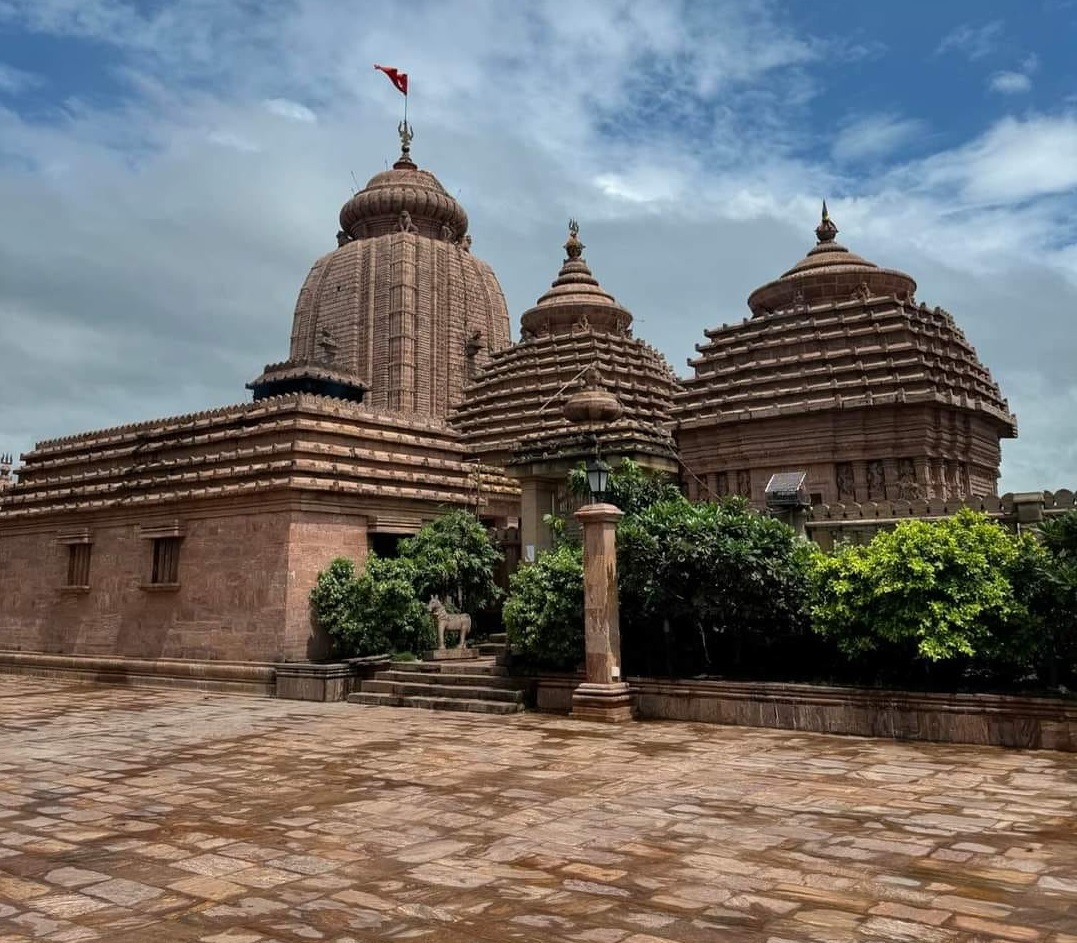
How many steps are in Tara Tarini temple?
The Maa Tara Tarini Temple is accessed via a famous 999-step staircase that pilgrims and tourists climb to reach the hilltop shrine. Here’s what you need to know about this spiritual journey:
The 999 Steps: Key Details
-
Symbolism:
-
Represents the cosmic connection between earth and divine energy.
-
Each step is believed to purify the mind and body.
-
-
Physical Challenge:
-
Elevation gain: 708 ft (216 meters).
-
Time required: 45–60 minutes (average climb).
-
-
Route Features:
-
Rest points: Every 100 steps with shaded benches.
-
Drinking water: Available at intervals.
-
Mini shrines: Dedicated to other deities along the path.
-
Alternative Access Options
-
Ropeway:
-
Cost: ₹100 (round trip).
-
Duration: 5 minutes.
-
Capacity: 6 persons per cabin.
-
-
Jeep Service:
-
Available from the base to a point near the summit (2 km steep road).
-
Cost: ₹50 per person.
-
Best Time to Climb
-
Early morning (5–7 AM): Cool weather, fewer crowds.
-
Sunset: Stunning views but bring a flashlight for descent.
Tip: Wear comfortable shoes and carry a small towel—the climb can be sweaty
What is the story behind Maa Tarini?
The story of Maa Tarini, one of the twin goddesses worshipped at the Tara Tarini Temple, is a captivating blend of ancient mythology, tribal folklore, and Tantric traditions. Here’s the sacred narrative behind her origin and significance:
The Shakti Peetha Legend
According to the Puranas, when Lord Vishnu dismembered Goddess Sati’s body to calm Shiva’s grief, her breasts (Stana) fell atop the Kumari Hills, making it one of the 51 Shakti Peethas. Here, she manifested as:
-
Maa Tara (The Liberator): Embodies compassion and protection.
-
Maa Tarini (The Ferrywoman): Symbolizes salvation, guiding devotees across life’s struggles like a divine boatman.
Tribal & Buddhist Roots
-
Sabara Tribe Worship: Originally revered as Tarini-Pen (Mother Tarini) by local tribes as a nature goddess of forests and rivers.
-
Buddhist Influence: The name “Tarini” (Sanskrit for “savior”) mirrors Buddhist Tara, who ferries souls to enlightenment.
3. The Twin Sisters Legend
A popular Odia folktale tells of two mysterious sisters who appeared in a village:
-
They healed diseases and protected locals from disasters.
-
One night, they vanished into the hills, leaving behind stone idols that became the temple’s deities.
4. Tantric Significance
-
Yogic Tradition: Tantrics worship Tarini as the ultimate ferrywoman who helps cross the ocean of worldly suffering.
-
Mantras: Her “Tarini Beej Mantra” (ॐ तारिण्यै नमः) is chanted for liberation.
5. Modern-Day Worship
-
Motherhood & Fertility: Couples pray to her for children; parents perform their baby’s first haircut (Mundan) here.
-
Ecological Guardian: She’s believed to protect the Rushikulya River and its Olive Ridley turtles.
6. Unique Symbolism
-
Iconography: Depicted holding a boat oar (symbolizing guidance) and a lotus (purity).
-
Offerings: Devotees present miniature boats (for safe journeys) and red sindoor (for marital bliss).
In Essence: Maa Tarini embodies compassionate strength—a divine mother who nurtures, protects, and liberates.
How to reach Tara Tarini temple?
Here’s a detailed guide to reaching Maa Tara Tarini Temple, covering all transport options and insider tips:
Location
Kumari Hills, Near Rushikulya River, Ganjam District, Odisha
-
Nearest Town: Brahmapur/Berhampur (30 km)
-
Base Village: Kanishi (5 km from temple)
By Train
-
Brahmapur Railway Station (Closest Major Station)
-
Trains: Regular connections from Kolkata, Chennai, Delhi, Hyderabad.
-
From Station:
-
Taxi/Auto: ₹300–500 to temple base (30 km, 1 hour).
-
Bus: OSRTC #777 to Kanishi (₹50, drops 2 km from base).
-
-
-
Chatrapur Station (40 km)
-
Fewer trains but less crowded.
-
By Air
-
Biju Patnaik Airport, Bhubaneswar (160 km)
-
Pre-paid Taxis: ₹2,500–3,000 (4-hour drive via NH16).
-
Bus: OSRTC Volvo to Brahmapur (₹350, 5 hours).
-
-
Vizag Airport (250 km) – Alternative for South Indian travelers.
By Road
From Bhubaneswar/Puri
-
Route: NH16 → Brahmapur → Kanishi (160 km, 4 hours).
-
Scenic Detour: Chilika Lake → Taptapani → Temple (adds 1 hour).
From Visakhapatnam
-
Route: NH16 → Ichchapuram → Gopalpur → Temple (250 km, 5.5 hours).
Last-Mile Access
-
From Base to Hilltop:
-
Ropeway: ₹100 round trip (5 mins; 8 AM–6 PM).
-
Steps: 999-step climb (45–60 mins; shaded rest points).
-
Jeep: Shared rides from Kanishi (₹50/person).
-
-
Parking:
-
Cars: ₹50/day | Buses: ₹100/day (guarded lot).
-
Public Transport Tips
-
From Brahmapur: Frequent shared autos to Kanishi (₹30/person).
-
From Gopalpur: Taxis charge ₹800–1,000 round trip.
Navigation Help
-
Google Maps Pin: Search “Tara Tarini Ropeway Base Station”.
-
Landmark: Look for the giant red archway on Puri-Gopalpur Road.
Best Travel Times
-
Weekdays: Less crowded (Wed–Fri ideal).
-
Morning: Reach by 6 AM to avoid heat and queues.
Tip: Combine with visits to Taptapani Hot Springs (50 km) or Gopalpur Beach (55 km) for a full-day trip

![Maa Tara Tarini Temple: A Guide To What To Know Before You Go [Updated-2025]](https://traveloinfo.com/wp-content/uploads/2025/06/tara4.jpg)
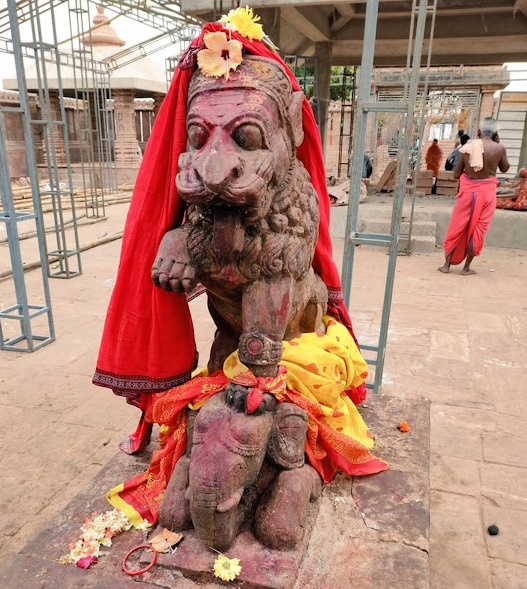
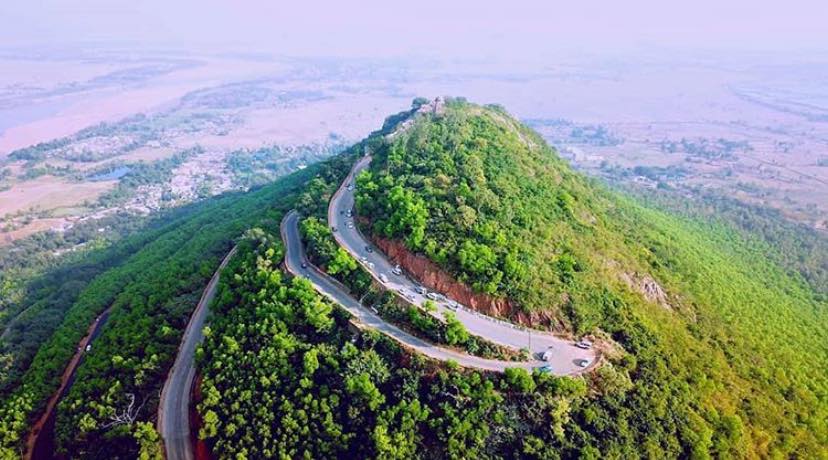
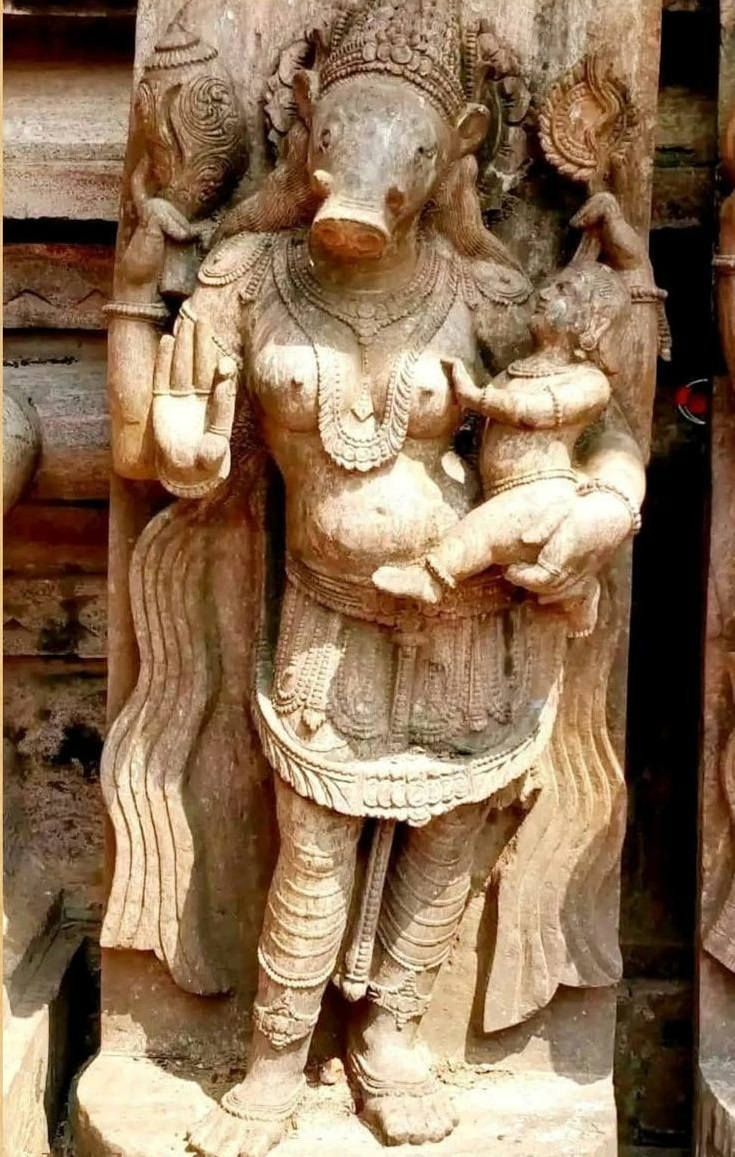
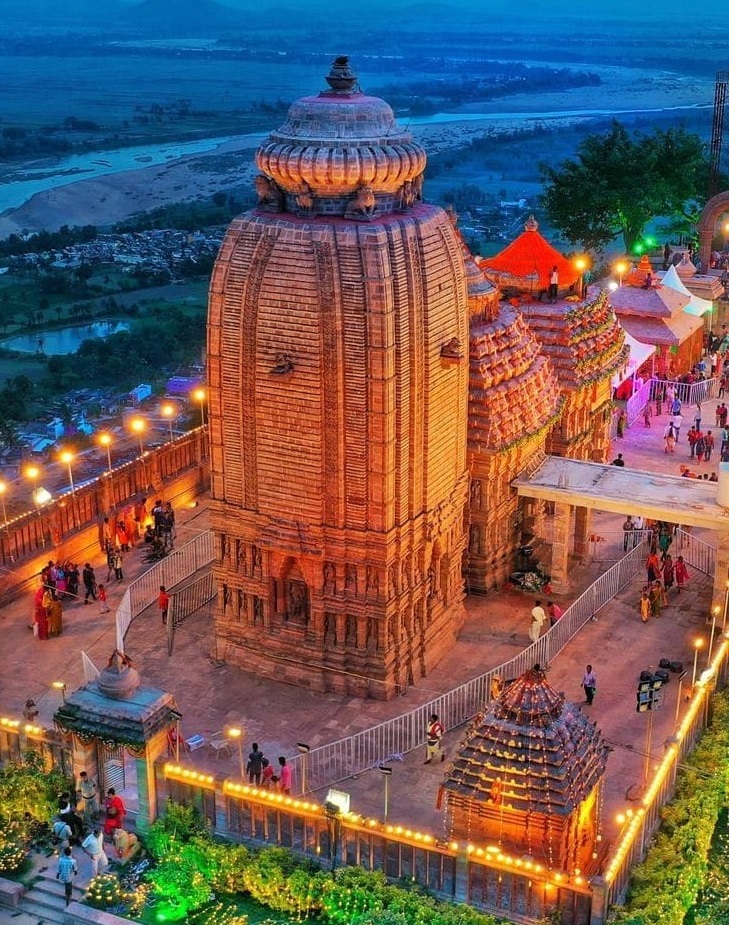
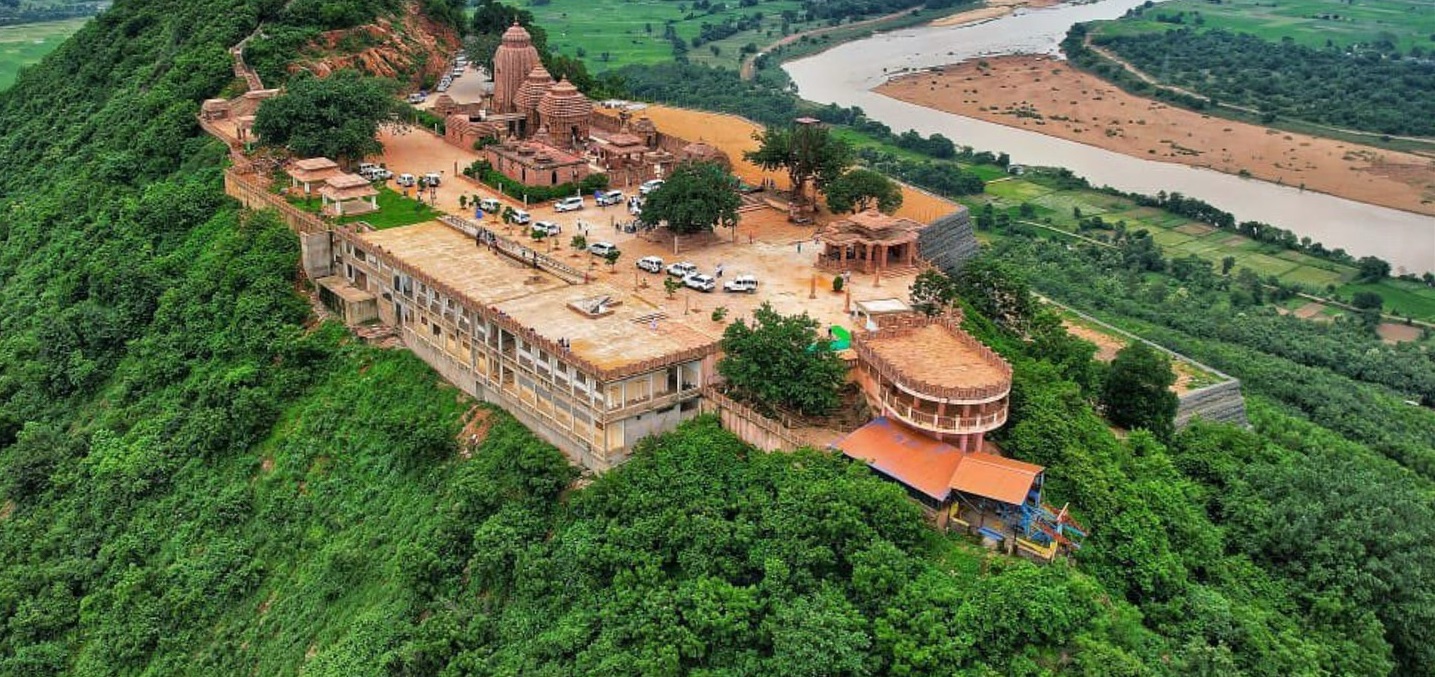
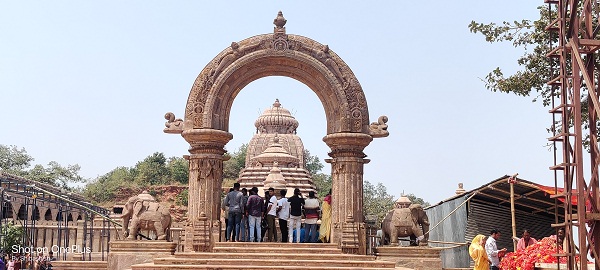
![Nashik Kumbh Mela [Updated-2025]](https://traveloinfo.com/wp-content/uploads/2025/06/Kumbh-Mela3.png)
![Religious places in Prayagraj, Uttar Pradesh [Updated-2025]](https://traveloinfo.com/wp-content/uploads/2025/06/prayagraj-3.jpg)
![Religious places in Nashik, Maharashtra [Updated-2025]](https://traveloinfo.com/wp-content/uploads/2025/06/nashik-tour.jpg)
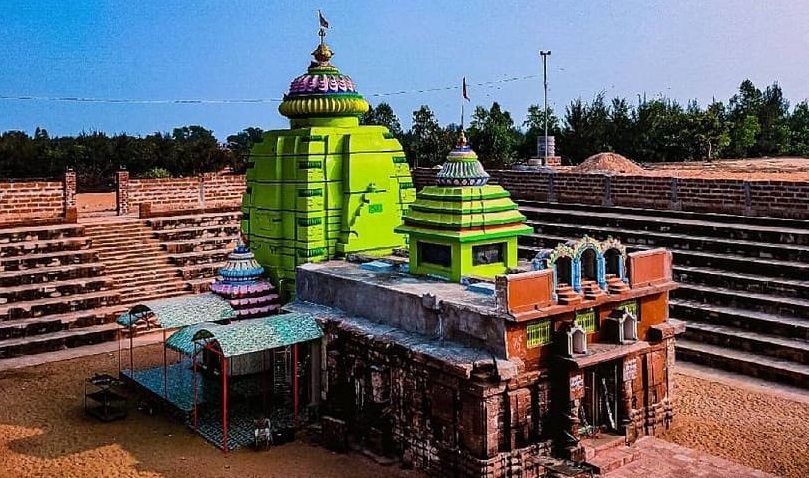
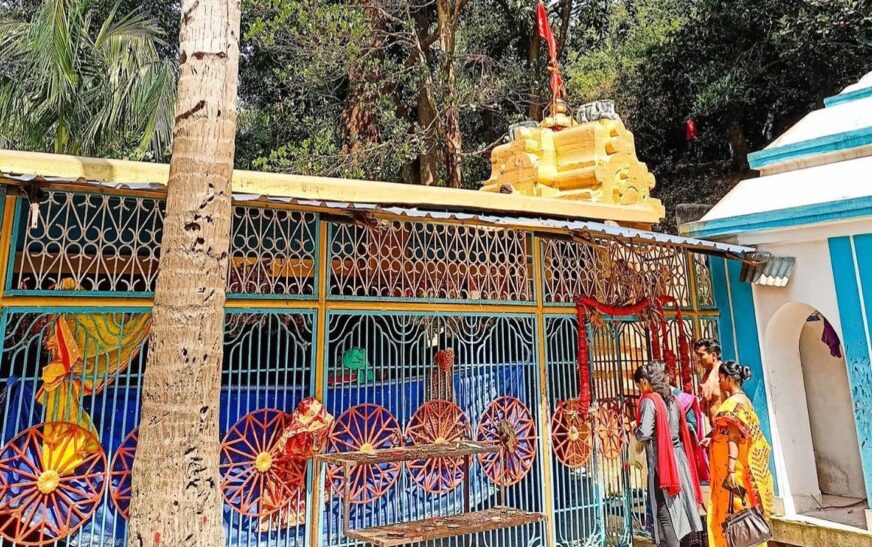
![Religious place in Mumbai, Maharashtra [Updated-2025]](https://traveloinfo.com/wp-content/uploads/2025/02/Siddhivinayak-Temple-Mumbai.jpg)
![Religious place in Delhi [Updated-2025]](https://traveloinfo.com/wp-content/uploads/2025/02/lotus-temple-DELHI.jpg)
![Religious place in Bangalore, Karnataka [Updated-2025]](https://traveloinfo.com/wp-content/uploads/2025/02/ISKCON-Temple-in-Bangalore.jpg)
![Religious place in Hyderabad, Telangana [Updated-2025]](https://traveloinfo.com/wp-content/uploads/2025/02/jagannath-temple-hyderabad.jpg)